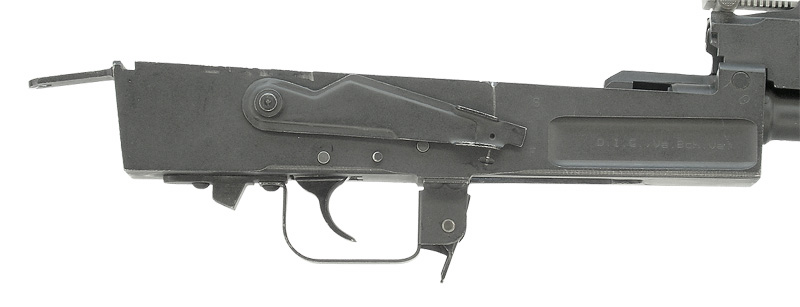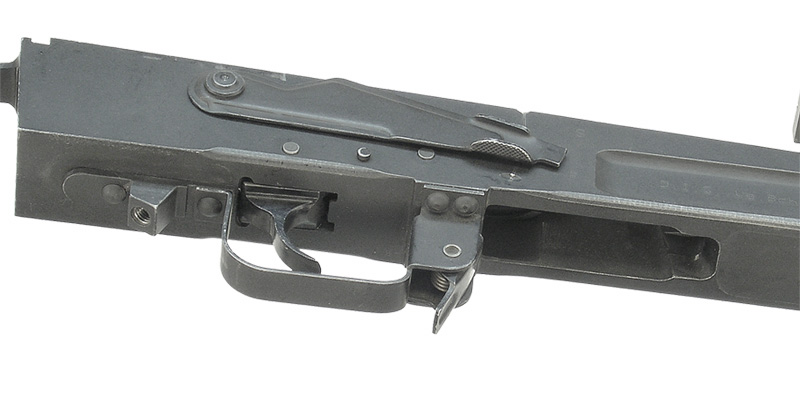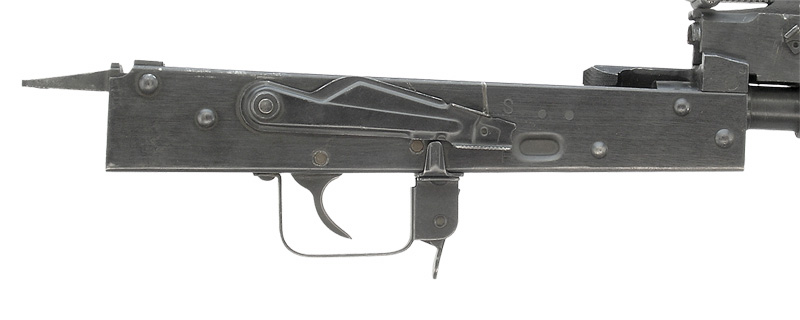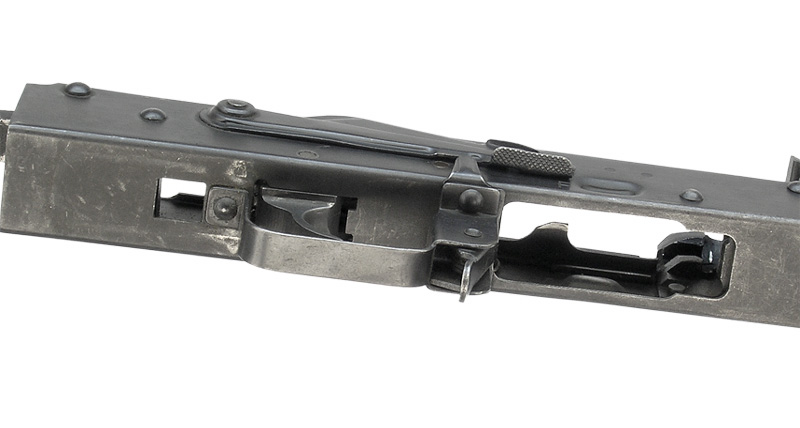Stamped and Milled AK Receiver Identification
Courtesy of UltiMAK Enhanced Performance
Some AK parts and accessories are sold for either stamped receivers or milled receivers, and are not interchangeable between the two, so we often get asked: “How do I know whether I have a stamped receiver or a milled receiver?”
The short answer of course, is, “Look at it.” But that’s unhelpful.
The difference is in the method of production. The original AK-47s that Kalashnikov built had milled receivers– the receivers were machined (milled, as in on a milling machine) from a solid block of steel. All the internal guide rails, magazine well and latch surfaces, bolt locking surfaces, bolt carrier stop, and the barrel and buttstock receiving sockets, were cut into the same, single piece of steel. Hence the milled receiver results in a lot of wasted steel, it costs more in terms of machine time, and its a bit heavier. Milled receivers can have one or two stock tangs (single tang receiver shown).

The Milled receiver (above) is one piece of steel. Though you see the trigger and hammer axle pins, and a protruding stop pin for the safety/selector lever, there are no rivet heads protruding from the sides of the milled receiver. There is a large, rectangular-shaped cut for the purpose of weight reduction (lightening cut) above and in front of the magazine well. The trigger guard is stamped, and is riveted onto the bottom of the receiver in much the same way as on a stamped receiver, but the pistol grip nut is attached to the milled receiver (pistol grips are usually interchangeable between receiver types).
The magazine well and magazine front latch slot, like everything else, is machined into the milled receiver, and can be clearly seen below. You can also see where the sharp edges have been milled off (chamfered) above the trigger and magazine for operator comfort. OK, technically, the milled receiver is two parts– The socket into which the back of the lower handguard fits is milled open at the bottom, and then covered with a seperate cover plate to from the bottom surface of the socket for the stock forend (lower handguard). If you look carefully you can see the faint outline of this cover plate, with rounded corners, starting at the front of the magazine well and extending forward to the front of the receiver. That cover plate allows for four functions. It makes machining easier, it allows for riveting the combination “bullet guide” and bolt kicker cam in place under and behind the barrel breech, it makes for a simpler, square cornered handguard tenon, and it makes room for the stowed cleaning rod:

The successful implementation of the stamped receiver (next two photos below) came later with the development of the AKM (Automatic, Kalashnikova, Modernized). The majority of the millions of AKs in circulation within the United States today have stamped receivers. Instead of a time-consuming and wasteful milling process, the receiver is stamped from a flat sheet of thin metal, bent into its box shape, and riveted together with a center spacer and both a front and rear “trunion”. Instead of being pinned or threaded directly into the receiver as in a milled receiver, the barrel for a stamped AK is pinned into a “barrel trunion” which contains the bolt locking and carrier stop surfaces. The trunion is then riveted into the front of the receiver. Similarly, a rear trunion is riveted into the back of the receiver and forms the buttstock socket, stock tang, and the carrier return spring mounting slot. You can clearly see the three protruding rivet heads at the barrel trunion and the two rivet heads holding in the rear trunion:

Instead of a large lightening cut, you see a smaller, more rounded dimple just above the magazine. These form the internal magazine well surfaces that keep the magazine centered in the rifle. The lower bolt-guide rails, including the ejector (which is clearly visible through the mag well below) are separate stampings that are spot-welded into each side of the receiver. In the first of these two photos you can see two of these spot welds just above the side dimple, but they are not always visible, depending on the type and quality of the finish. The trigger guard is very similar to that of a milled receiver. The grip nut (not shown) is a separate small piece that fits down from inside the receiver through the square hole behind the trigger guard.

As you now see, there can be no mistaking the two AK receiver types. Both receiver types come in a number of variations, but these shown are among the most common in the U.S..
According to Soviet manuals, the AKM, with its stamped receiver, has a longer life expectancy in terms of rounds fired.